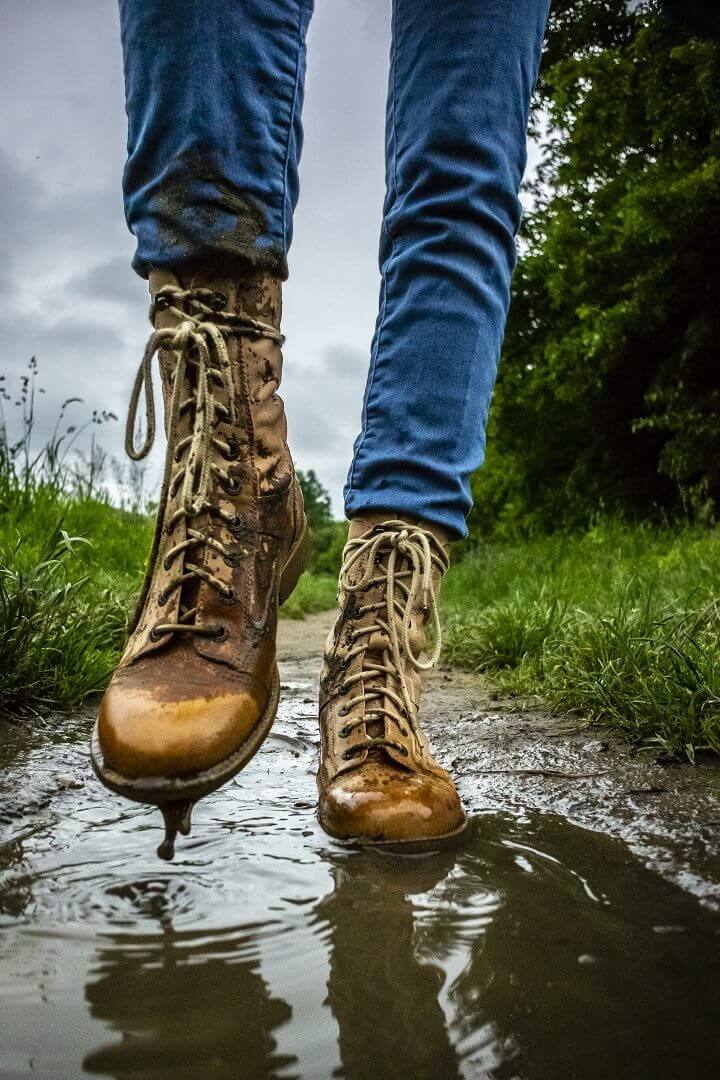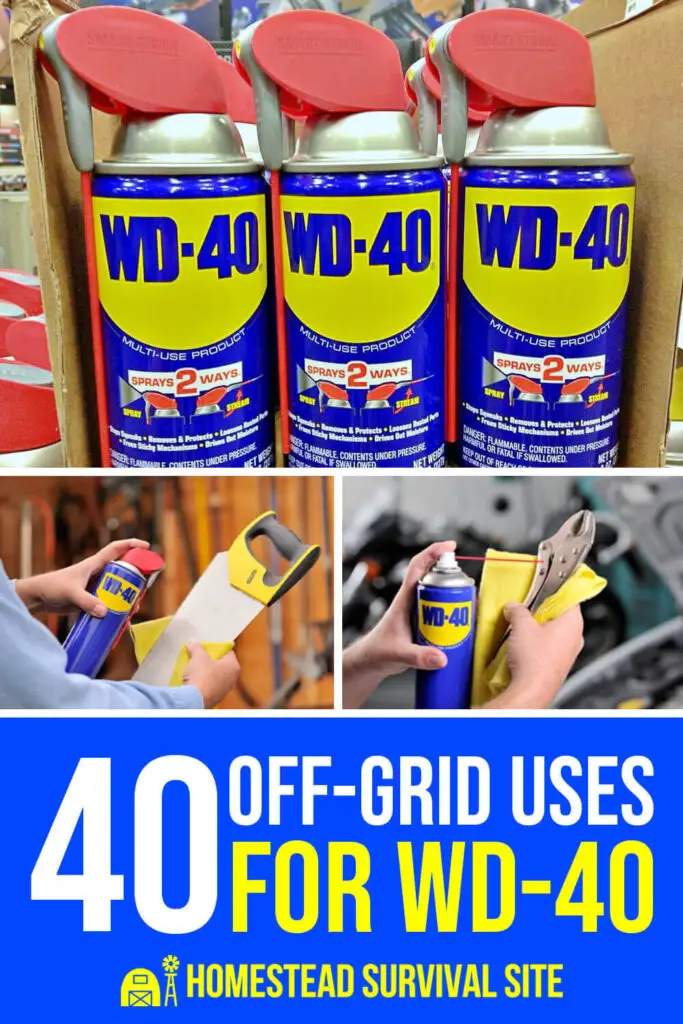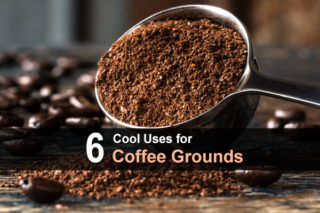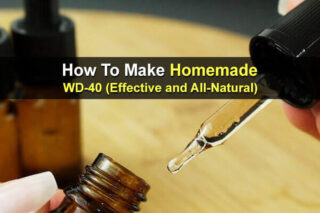Estimated reading time: 11 minutes
WD-40 is the most iconic petroleum-based spray on the market. Everyone recognizes the blue and yellow spray can found in most workshops and garages throughout the country. However, not everyone realizes that there are many uses for WD-40 beyond removing rust. It’s something that everyone living off of the grid or a homestead needs to have.
WD-40 is a favorite for garage mechanics, originating in the 1950s to dissolve and remove rust. It also helps to prevent rust and corrosion by applying a protective coating over the metal. That doesn’t mean it’s only for mechanics or handymen.
If it weren’t so useful, most homes in the United States wouldn’t have at least one can somewhere. So, let’s take a look at the numerous uses.
Want to save this post for later? Click Here to Pin It On Pinterest!
40 Unusual Uses for WD-40
You won’t believe how versatile this product is and how many ways you can use it!
1. Stop Saw Blades and Tools From Rusting
Chances are you use your tools a lot; they’re part of the lifestyle. If so, you need plenty of WD-40 to stop rust from forming on your saw blades and tools. Spray thin layers over them when they won’t be in use for a while.
2. Remove Rusted Nails
Are you in the middle of a project and realize you have a rusted nail that won’t come out? Let WD-40 come to the rescue. Hit the rusty nail with the spray, let it soak for a few minutes, and get back to work removing it. Don’t let rust stop your projects.
3. Getting Crayon Off Walls
Got kids? Any parent will eventually face crayon marks on the walls; it’s a right of passage for both kids and parents. The problem is that crayon is notoriously hard to remove, but using WD-40 makes it easier. You will have to use a grease remover to get the WD-40 residue off the walls, but that’s easier than removing the crayon.
4. Removing Rings from Fingers
Don’t call the fire department just yet. If you can’t get a ring off of your finger, a squirt of WD-40 is often enough to get it off without the ring needing to be cut.
5. Acts as an Insect Repellant
You don’t want to use WD-40 as your personal insect repellant, but it can be sprayed on insects to kill them. Another idea is to spray surfaces to stop insects from coming into the house or shed.
6. Block Wasps
Allowing wasps to build a home nearby is a big no-no. Wasps sting and can seriously harm humans and animals, and they love to build nests under eaves or small hiding spots. Spray WD-40 under all the eaves of your house and previous nesting spots to stop it from happening again.
7. Keep Spiders Away
Spiders have benefits, but that doesn’t mean you have to enjoy them around your house. Spray some WD-40 on places where spiders and insects might enter your home like door frames and windowsills. The scent deters them from entering your home.
8. Waterproofing Boots & Gloves
Living off the grid means you more than likely spend a lot of time outside. Spray your outdoor wear with WD-40 as an effective, low-cost, waterproofing solution. Use it on boots, gloves, and anything else you want to waterproof.

9. Get Poop Off Of Shoes
No one likes to step in dog poop, and scraping it off your shoes seems to make an even bigger mess. Try spraying WD-40 on the bottom of your shoes and use an old toothbrush to get the poop off. Then, rinse the sole of your shoe with cold water.
10. Protect Gardening Tools
WD-40 lubricates and protects against moisture. One simple way to use it is to spray your garden tools down with it to prevent drying and cracking of the handles. It can also clean up the metal parts, keeping your tools looking brand new.
11. Kill Weeds
If you have stubborn weeds that don’t want to die, spraying WD-40 on them works great. All you have to do is spray the weeds and wait a few days. Then you should be able to pull the weeds out, root and all.
12. Keep Slugs and Snails Away
While it’s not the best idea to use WD-40 on vegetable plants, you can use it to repel snails and slugs from garden beds and potted plants. It works particularly well on potted plants if you spray the outside of the pot; it makes it too slippery for them to climb.
13. Stop Hose Ends From Corroding
Does it seem like your hose always ends up corroded? If so, all you need is a bit of WD-40 to blast the rust away and stop it from coming back. Keep both hose ends well sprayed.
14. Lubricating a Shovel
Digging into hard ground is never easy. Try lubricating your shovel with WD-40 to make it easier to penetrate hard soil.
15. Cleaning Grills
If you have baked-on grease or food stuck to your camping grill or barbecue grill, a bit of WD-40 will dissolve the residue. Make sure you scrub off any traces of it before lighting up the grill again, unless you want a large fire!
16. Clean and Soften Paintbrushes
Don’t buy new paintbrushes. Wash them in hot water and spray with WD-40, then let them sit for 30 minutes. Wash in hot, soapy water and repeat if needed. The WD-40 will break up the paint residue.
17. Lubricate to Prevent Splinters
Most people associate WD-40 with metal, but it can be used to lubricate and protect wood as well. If you notice the shovel handle or wooden banister feeling rough, you could end up with a splinter. Try spraying it down, lubricating and smoothing sharp edges to prevent a splinter.
18. Removing Road Tar
WD-40 contains a kerosine-like component that makes it possible to dissolve thick, petroleum substances, including road tar. If you have road tar on your vehicle, spray some WD-40 on it to help loosen it up.
19. Lubricating a Sewing Machine
If you spend a lot of time sewing, you want to keep everything lubricated and working well. A few sprays of WD-40 will do the trick!
20. Take Paint and Super Glue Off Your Hands
After you spend time working on some DIY projects, you might have some paint or super glue on your hands. If soap and warm water doesn’t work, spray a small amount of WD-40 onto your hands, massage it in well, and use soap and water to clean it all up. You’ll be shocked at how fast everything comes off your hands.
21. Clean Oil Spots
Whether the oil spot is in your garage or driveway, no one likes to see them. Spray the spot with a thick coat of WD-40 and then use the hose to wash it off. The spot will be gone after the water dries.
22. Keep Snow Off of Windows
If snow is in your forecast, you can stop snow from building up on your house windows by spraying them with WD-40. Snow won’t stick if there is WD-40 there.
23. Stops Locks From Freezing
If you know the temperatures are dipping, spray WD-40 in the locks of your car. It’ll stop water from seeping into the locks and freezing them.

24. Removing Rubber Scuff Marks
If you have scuff marks made by modern rubber, then the rubber is actually a petroleum byproduct rather than made by real rubber. WD-40 dissolves petroleum-based products, so spray it on the scuff marks and scrub it off!
25. Remove Grease From Hands
Instead of getting grease all over the sink as you try to scrub it off, spray your hands with WD-40 when you’re done working. Rub your hands together and wipe with paper towels. Then, clean them with soap and warm water.
26. Removing Duct Tape Residue
Everyone who lives off the grid knows that duct tape is a fix-all for many things, but if you remove the duct tape, it leaves behind a sticky adhesive that feels impossible to remove. Once you take off the duct tape, spray WD-40 on the leftover adhesive; it’ll dissolve quickly.
27. Taking Labels Off Glass
If you have stickers or labels on windows, glassware, or anything made of glass, WD-40 is a solvent that removes the adhesive from the labels and stickers. It makes any adhesive come off of glass easier.
28. Loosening Stuck Zippers
If your zipper is stuck, spraying a bit of WD-40 might be all that you need to get it working again. Zippers get sticky and develop rust over time, so this solution is perfect.
29. Clean Carpet Stains
If you have a stain on your carpet, spray it with WD-40, wait a few minutes, and use a sponge with warm, soapy water to clean it up. You can repeat this process until the stain is gone.
30. Cleaning Stainless Steel
Stainless steel is amazing, but it shows everything, including fingerprints and grease from cooking. If you want to clean your stainless steel, spray it with WD-40 and wipe it off with paper towels.
31. Remove Wax From Candleholders
Just spray some WD-40 onto the wax and it will come of much more easily. In fact, if you spray a little bit inside your candleholders before using them, you can prevent the wax from sticking to the candleholders in the first place.
32. Getting Stains Off Porcelain
Stains on porcelain isn’t a huge deal, but no one likes to have stains. Use WD-40 on your toilet or other porcelain items to remove the stains with no problem.
33. Polishing Chrome
If you have any chrome, a thin coat of WD-40 applied to chrome surfaces will make it look new again while protecting it from moisture.
34. Fixing Squeaky Hinges
One of the most common ways to use WD-40 is to fix squeaky hinges. Whether your door or front porch swing squeaks, WD-40 is the solution. It’s not designed to be a lubricating oil, but it’s able to get into the crevices of hinges and stop the squeak.
35. Clean Lawn Mower Blades
Here’s a simple use for WD-40. Spray your lawnmower blades to help prevent grass clippings from collecting on them. You also can use it to wipe the blades down and clean up the underside of the mower.
36. Clean Showerheads
The rust and gunk that accumulates on showerheads is nasty, but it can be hard to remove. Try spraying WD-40 on the showerheads and letting it sit for five minutes. Then, wipe it down with warm water. Not only will this remove gunk and rust, but it also helps prevent it from coming back.
37. Stop Snow From Sticking
Whether you use a shovel or a snowplow, WD-40 makes the snow slide right off. It won’t clog the chute or get stuck on your shovel. It’s a simple trick that makes one job just a bit easier.
38. Protecting Bike Chains
Maintaining and caring for your bicycle is part of the deal. Spray the chains once or twice a year with WD-40, dissolving old grease and protecting the chain from moisture.
39. Prevent Mildew Growth Outside
Mildew grows easily on objects left outside, such as furniture or outside fabric. Spraying WD-40 on these items helps to prevent mildew growth, and you also can spray it on mildew spots to help remove them. Scrub well after spraying the items and use warm, soapy water to wipe them off.
40. Renew Faded Plastic Furniture
Do you have usable plastic chairs but they lack shine? Faded plastic patio furniture is easy to renew with a bit of WD-40. Spray it directly onto the plastic and wipe it clean with a dry cloth. The results are shocking!
Keep WD-40 on Hand!
With all of these uses, it’s a good idea to keep a few bottles of WD-40 on hand when you live off-grid. You’ll find plenty of ways to use it.
Like this post? Don't Forget to Pin It On Pinterest!
You May Also Like:











Don’t use WD-40 lock keyways.
It attracts dust. Use graphite from a pencil, lock medic or a dry lube.
Locksmith at my work hated all the problems it caused
You nailed it. The residue it leaves behind makes it unsuitable in lots of places due to just the reasoning you mentioned. It’s far more effective as a (guess where the name comes from,,,,,, WATER DISPLACEMENT ! ! ) than as a lubricant.
People use it lo “lubricate sliding doors and windows, yet it gets gummed up by the dust that lands on it. That’s worse than the lock keyways.
It also helps with arthritis,I’ve used it for years.
Rubbing it in or drinking it? 🙂
Sorry, couldn’t resist!
I use to it helps
Your #34 points out (rightly so) that it is NOT a lubricant, tho it can help in a pinch. Far better to use a silicone or similar product if available, and there are plenty. And they will do the job better and longer.
A drop or two of “lubricating oil” or “machine oil” do better in lots of situations. From firearms to car doors, WD40 has better options.
Having said this, I have to admit I have LOTS of WD 40 in my house, car, and several of my various tool boxes. But I also keep a small container of “sewing machine oil” in the same places. Most have seen the “3-in-1 oil” cans, it’s the same stuff.
Different strokes for different folks, right? But I have been using these professionally for over 40 years, so have some first-hand knowledge of the topic.
Love most of this, it will help the younger crowd who haven’t yet picked up on some of these points you share!